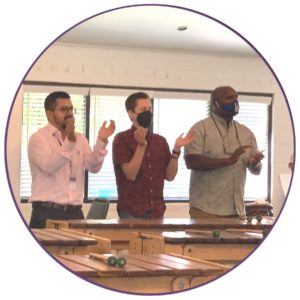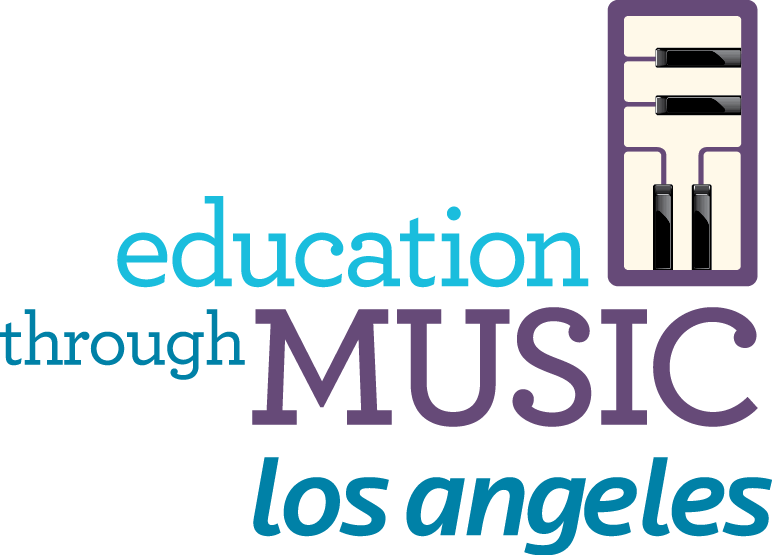Spotlight on Ben Makarchuk, Music Teacher
"Music education is an effective medium for students to explore a wide range of topics while also learning about themselves in the process."

What was your experience learning music growing up?
In my early childhood, my music education was weekly piano lessons and listening to the CDs that were in my parents’ collection. My horizons started to expand once I got to middle and high school, and started playing French Horn in the band. Throughout this time, I was lucky to have benefited from the tutelage of several amazing band directors who exposed me both to traditional forms of band as well as jazz.
My middle school band director was an accomplished jazz saxophone player who showed me the Blues for the first time. This was a transformational experience for me; I am forever grateful to him for showing me that there was more than one way to learn music. My high school band director pushed me to take music seriously. Because of him, I started taking private lessons on horn.
Why do you teach music?
I am in the field of music education because I believe that it has immense potential to enact positive change. Music is a highly executive method of communication. It is fun and, as a veteran teacher told me many years ago, students learn best when they are having fun. Music education is an effective medium for students to explore a wide range of topics while also learning about themselves in the process.
Teaching has taught me how to stand up for what I believe in. When you are working alongside children, you realize how much your actions really do matter, which forces you to find new ways to be your best self. It has also forced me to continue expanding my musical and cultural horizons.
How would you explain culturally responsive teaching?
All teaching is biased towards the cultural system from which it emerged. Curricula and teaching strategies will be consistent with the cultural learnings of the group that designed them. Although this bias is natural, culturally tone-deaf teaching strategies can be ineffective at best and harmful at worst. Culturally responsive teaching means building lessons that align with the cultural backgrounds of students. The best teachers take the time to know their students, understand their learning styles, and create a classroom environment in which everyone feels welcome.
You recently taught a music lesson using a step routine as part of your students’ annual Spring Concert. Share how you created that lesson and about the guest instructor’s role in culturally responsive teaching.
The synthesis of this lesson began when Jon Batiste won his Grammy for album of the year this past March. I very much wanted the students to perform a song from that record because of its positivity, energy, and excellent musicality. I settled on teaching them the song “WE ARE.” I was concerned however about the almost 2-minute-long break in the song, and started brainstorming things that we could do on stage during that time. That part of the song features a marching band, and I figured that it would make sense for the students to do a step routine to accompany it. I was able to enlist the help of Coach T, a good friend of mine and an accomplished step coach in the area. In a few short lessons, we worked with the kids and prepared them for the performance, which we were ultimately very proud of.
I want to emphasize that this lesson would not have been possible without Coach T’s assistance. Stepping is something that I was totally unqualified to teach on my own and I am so grateful that, despite my limitations, we found a way to bring it into the classroom.
In regards to inclusivity and diversity in the music classroom, what is an aspect you are still growing in? How are you pursuing that growth?
Effective Diversity Equity and Inclusion (DEI) work requires flexibility. Teachers need to be able to adapt teaching practices to best meet the needs of students. ETM-LA’s model allows for this flexibility because no single teaching strategy is imposed on the teachers. We are actively encouraged by our supervisors to choose teaching strategies that work best for our students.
When it comes to DEI work, growth can never stop because culture never stands still. You need to be consistently learning about new music, dance, food, etc. from a wide variety of cultures to stay on top of existing trends. The best way is by immersing yourself within the cultural institutions that operate in the community you reach. Observing what music is playing at a locally owned restaurant or seeing what music is being shared in online forums that are relevant to your target group is a great way to get started. Keep your ear to the street.
What practical advice would you give to fellow educators to begin a foundation of culturally responsive teaching?
When it comes to culturally responsive teaching, your students are the experts. If you allow them to teach you about their cultural experience, then you can work together to build a classroom environment in which your students feel like they have a place.
Using your ears is also an integral part of culturally responsive teaching. In my experience, music notation is often a barrier. It is important to get in the habit of teaching with your ears. Sometimes this can mean transcribing recordings or leading activities without any form of notation behind them.






